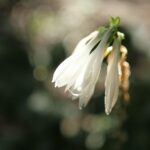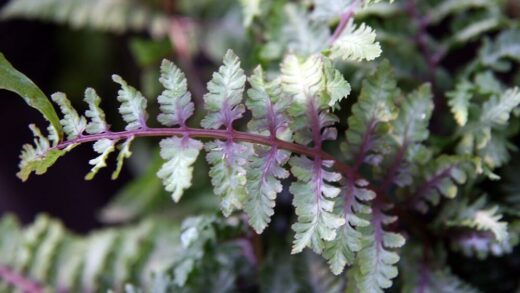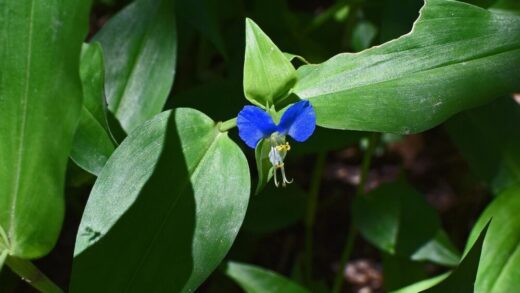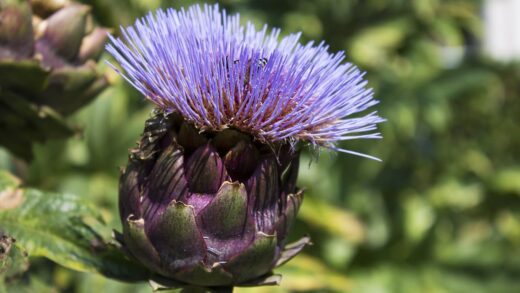The successful cultivation of the majestic persian onion begins with proper planting techniques, a fundamental step that lays the groundwork for seasons of spectacular blooms. Planting these ornamental alliums is not a complicated affair, but attention to a few key details such as timing, depth, and spacing can make a significant difference in their performance. These plants are grown from bulbs, which are essentially compact packages of stored energy, complete with the embryonic flower for the following season. Providing these bulbs with the ideal conditions from the moment they are placed in the ground is the most effective way to ensure they establish well and thrive. This initial care sets the stage for the development of strong root systems, robust foliage, and ultimately, the magnificent, globe-shaped purple flowers that are the hallmark of this species.
The optimal time to plant persian onion bulbs is in the autumn, typically from September to November, before the ground freezes solid. This timing is crucial as it allows the bulbs sufficient time to develop a strong and healthy root system throughout the cooler months. These roots anchor the plant and are essential for absorbing the necessary water and nutrients to fuel the vigorous burst of growth that occurs in the spring. Planting too early in the autumn when the soil is still warm can sometimes lead to premature top growth, which may be damaged by winter frosts. Conversely, planting too late may not give the roots enough time to establish, potentially leading to a weaker plant in the spring.
When preparing for planting, the depth at which the bulbs are placed is a critical factor. A good rule of thumb for most bulbs, including the persian onion, is to plant them at a depth that is approximately two to three times the height of the bulb itself. For the relatively large bulbs of Allium aflatunense, this usually translates to a planting depth of about 15 to 20 centimetres. Planting them at the correct depth protects the bulbs from temperature fluctuations near the soil surface and helps to ensure the tall flower stems are well-anchored and less likely to topple over.
Proper spacing between the bulbs is also important to consider. While they can look stunning planted in dense drifts, overcrowding can lead to competition for resources such as light, water, and nutrients, and it can also restrict air circulation, which may increase the risk of fungal diseases. A spacing of at least 20 to 30 centimetres between each bulb is recommended. This gives each plant enough room to develop its full rosette of leaves without being shaded by its neighbours and allows for good airflow, contributing to the overall health of the planting.
Selecting the right bulbs
The quality of the bulbs you plant will have a direct impact on the success of your display, so it is well worth taking the time to select the best ones available. When purchasing persian onion bulbs, look for those that are firm and heavy for their size. A soft or mushy bulb is a clear sign of rot or disease and should be avoided at all costs. Similarly, bulbs that feel lightweight or appear desiccated and shrivelled may have dried out in storage and will likely lack the necessary energy reserves to produce a strong plant.
Inspect the bulbs for any signs of physical damage, such as cuts or bruises, as these can provide an entry point for diseases. You should also check for any signs of mould or mildew on the papery outer tunic. While a small amount of surface mould can sometimes be wiped away, it is generally best to choose clean, blemish-free bulbs. The size of the bulb also matters; in general, a larger bulb will contain more stored food and has the potential to produce a larger, more impressive flower in its first year.
It is always advisable to purchase your bulbs from a reputable supplier, whether it be a local garden centre or a specialist online nursery. Reputable sellers will have stored the bulbs in optimal conditions to ensure they are healthy and viable when you receive them. They are also more likely to be correctly named and true to type, so you can be confident that you are planting the correct species. Buying pre-packaged bulbs from a trusted source is often a reliable way to ensure you are getting high-quality stock.
Once you have purchased your bulbs, you should aim to plant them as soon as possible. If you cannot plant them immediately, it is important to store them correctly to maintain their viability. Keep the bulbs in a cool, dry, and dark place with good air circulation. A garage or shed is often an ideal location. Avoid storing them in plastic bags, as this can trap moisture and encourage mould and rot. A paper bag or a mesh sack is a much better option for temporary storage until you are ready to get them in the ground.
The step-by-step planting process
The process of planting persian onion bulbs is straightforward and can be a very enjoyable autumn task. The first step is to ensure your chosen planting site has been thoroughly prepared. This means the soil should be loosened to a depth of at least 30 centimetres and amended with organic matter if necessary to improve its structure and drainage. It is also important to clear the area of any weeds or large stones that could obstruct the growth of the bulbs.
Once the bed is prepared, you can begin to dig the individual planting holes. Using a trowel or a bulb planter, dig each hole to the required depth, which should be about two to three times the height of the bulb. It is a good idea to sprinkle a small amount of bone meal or a specialized bulb fertilizer at the bottom of each hole. This provides a slow-release source of phosphorus, which is essential for strong root development. Lightly mix the fertilizer into the soil at the base of the hole before placing the bulb.
When placing the bulb in the hole, it is crucial to orient it correctly. The bulb has a pointed end, which is where the shoot will emerge, and a flatter end, where the roots will grow. The pointed end should always be facing upwards. While an upside-down allium may still find its way to the surface, it will expend a great deal of extra energy doing so, which can result in a weaker plant. Place the bulb gently at the bottom of the hole, ensuring it is sitting firmly on the soil.
After placing the bulb, backfill the hole with the excavated soil, gently firming it down to eliminate any large air pockets. Be careful not to compact the soil too heavily. Once all the bulbs are planted, it is beneficial to water the area thoroughly. This helps to settle the soil around the bulbs and provides the initial moisture needed to encourage the roots to start growing. Finally, you can apply a layer of mulch, such as leaf mould or bark chips, over the planting area. This will help to conserve moisture, suppress weeds, and provide some insulation for the bulbs over the winter.
Propagation through division
Propagating persian onions is most commonly and effectively done through the division of established clumps of bulbs. Over several years, a single parent bulb will produce smaller offset bulbs, which grow alongside it. This natural process eventually results in a dense clump of plants. While this can create a wonderfully full display, it can also lead to overcrowding, which may cause a decline in flowering performance as the bulbs compete for resources. Dividing these clumps is not only a way to create new plants for other parts of your garden, but it is also beneficial for the health of the existing ones.
The best time to divide the bulbs is in the late summer or early autumn, after the foliage has completely died back and the bulbs are dormant. This gives the newly separated bulbs plenty of time to re-establish their root systems before the onset of winter. To begin, carefully lift the entire clump out of the ground using a garden fork. It is important to dig far enough around the clump to avoid spearing the bulbs with the tines of the fork. Once the clump is lifted, gently shake off the excess soil so that you can clearly see the individual bulbs.
You will notice that the clump consists of several bulbs of varying sizes clustered together. These can usually be separated quite easily by hand. Gently twist and pull the bulbs apart, taking care not to damage the basal plate at the bottom of each bulb, as this is where the new roots will grow from. The larger bulbs can be replanted immediately and will likely flower in the following spring. The smaller offset bulbs may need a year or two to grow to a sufficient size before they are capable of flowering, so it can be a good idea to plant these in a dedicated nursery bed where they can mature.
When replanting the divided bulbs, follow the same guidelines as for planting new bulbs. Choose a sunny, well-drained location and plant them at a depth of two to three times their height, with the pointed end facing up. Spacing them at least 20 to 30 centimetres apart will give them ample room to develop. By regularly dividing your clumps every three to four years, you can maintain the vigour of your persian onion display and gradually increase your stock of these stunning plants, all for free.
Propagation from seed
While division is the most common method of propagation, it is also possible to grow persian onions from seed, although this is a much more long-term project that requires a good deal of patience. Growing from seed can be a rewarding experience, and it is a great way to produce a large number of plants very economically. The process begins with collecting the seed in the summer after the flowers have faded. Allow the seed heads to dry completely on the plant; you will know they are ready when the individual seed capsules turn brown and begin to split open.
Once the seed heads are dry, cut them from the plant and place them in a paper bag. Shake the bag vigorously to release the small, black seeds from the capsules. You can then separate the seeds from the rest of the chaff. The viability of allium seeds can be short-lived, so it is best to sow them as soon as possible after collection. Sowing them in the autumn allows them to experience the cold winter temperatures, which is a process known as stratification that is often necessary to break their dormancy and trigger germination in the spring.
You can sow the seeds directly into a prepared seedbed in a sheltered part of the garden, or you can sow them in pots or trays filled with a good-quality seed-starting mix. Lightly cover the seeds with a thin layer of compost or vermiculite. If you are sowing in containers, place them outdoors in a cold frame or a sheltered spot where they will be exposed to the winter weather. Keep the compost moist but not waterlogged throughout the winter.
Germination will occur in the spring as the temperatures begin to rise. The seedlings will resemble tiny blades of grass, and it is important to keep them well-watered and free from weeds as they grow. They will spend their first year developing a tiny bulb. It will take several years, typically three to five years, for these seed-grown plants to reach a sufficient size to produce a flower. Although it is a slow process, growing from seed is a testament to a gardener’s dedication and can result in a magnificent swathe of these architectural beauties.



















